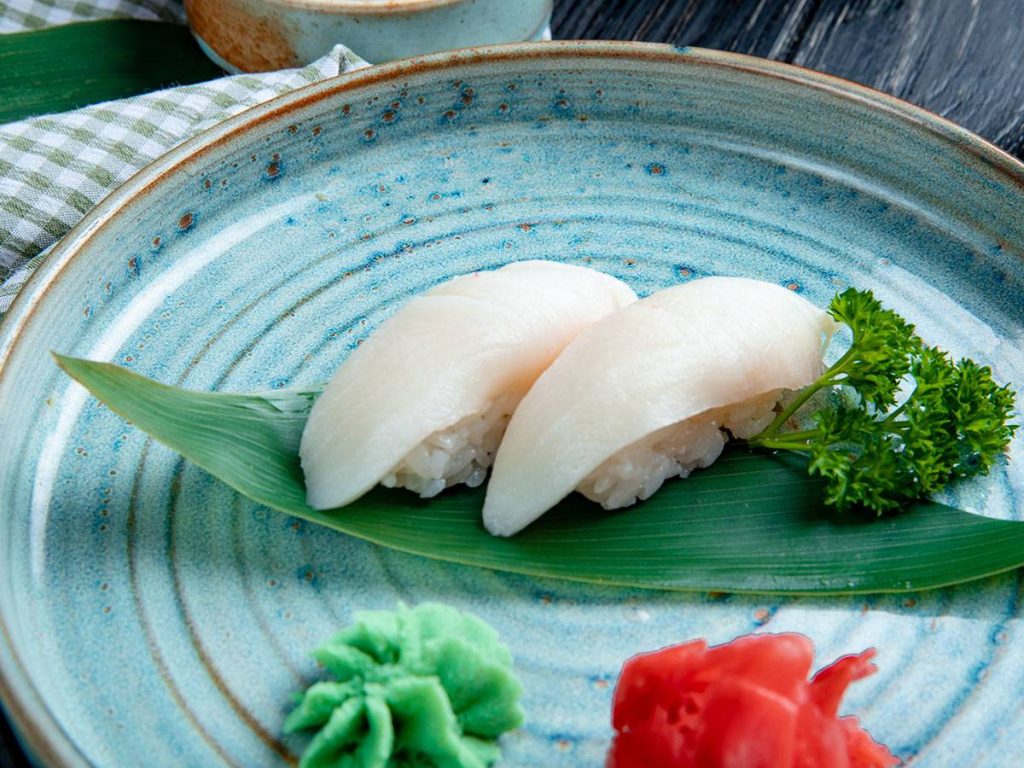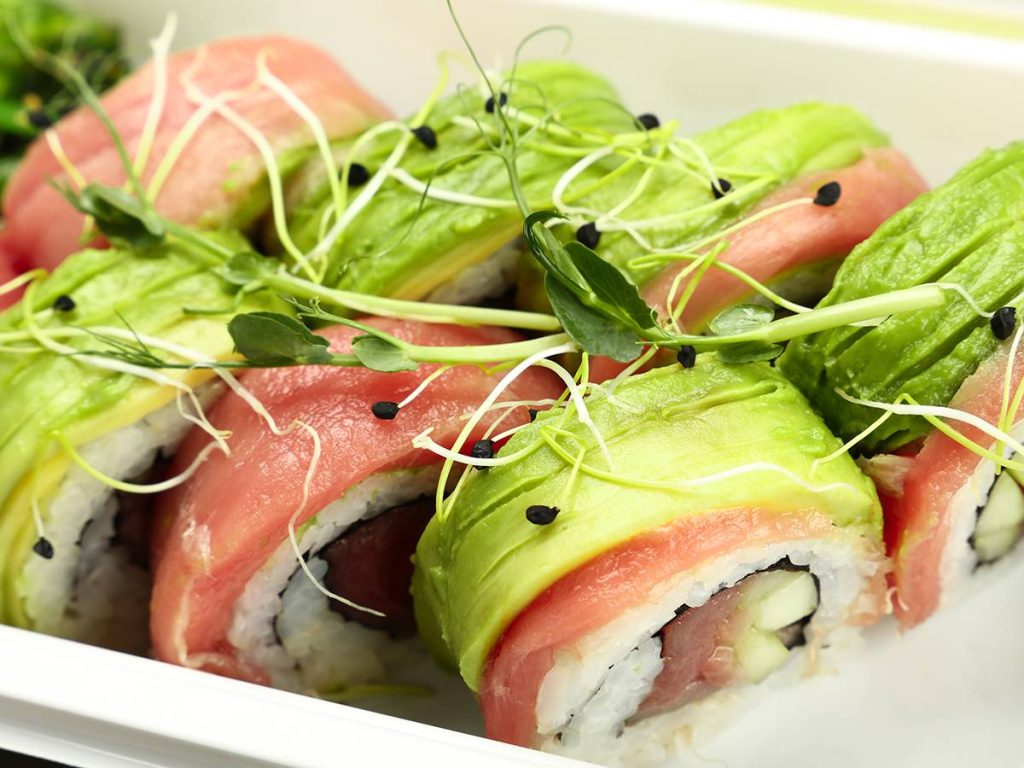Tuna is a prized and versatile ingredient in the world of sushi, renowned for its rich flavor, luscious texture, and beautiful marbling. Among the various species of tuna, two types commonly find their way into sushi creations: white tuna and yellowfin tuna. Discover the characteristics, flavors, and culinary applications of these two tuna varieties.

White Tuna
White tuna, also known as “albacore,” is a highly prized species appreciated for its mild flavor and tender texture. Unlike other tuna species, white tuna possesses a lighter flesh color, ranging from pale pink to ivory white when raw. The taste of white tuna is delicate, with a subtle sweetness and a buttery mouthfeel. This makes it an excellent choice for sushi lovers who prefer a milder and more refined flavor profile.
White tuna’s popularity in sushi can be attributed to its versatility. Its subtle taste allows it to harmonize with various ingredients, making it an ideal candidate for traditional nigiri sushi or maki rolls. The tender texture of white tuna complements the sushi rice, creating a delightful balance in each bite. Sushi enthusiasts often savor white tuna nigiri, where thin slices of the fish are draped over vinegared rice, accentuated with a touch of wasabi and soy sauce.

Yellowfin Tuna
Yellowfin tuna, commonly known as “ahi,” is another prized species that finds its place in sushi bars around the globe. It is renowned for its deep red flesh, firm texture, and robust flavor. Yellowfin tuna possesses a stronger taste compared to white tuna. It has a meaty and savory profile that sushi connoisseurs appreciate.
The name “yellowfin” is derived from the fish’s long, bright yellow fins. Its flesh exhibits varying shades of pink to reddish-brown, which intensify when seared or exposed to air. Yellowfin tuna’s firm texture holds up well in sushi preparations, making it a popular choice for sashimi, nigiri, and even seared tuna rolls.
In sushi, yellowfin tuna shines in dishes that showcase its bold flavor. Slices of yellowfin tuna sashimi, presented artistically on a platter, provide a mouthwatering experience. The clean taste, along with its firm texture, allows for a satisfying chew and a burst of umami. For those who enjoy a bit of seared goodness, yellowfin tuna is often featured in sushi rolls that are lightly seared on the outside, creating a tantalizing contrast between the caramelized edges and the raw center.
White tuna and yellowfin tuna offer sushi enthusiasts distinct experiences, each with its own set of flavors, textures, and culinary applications. White tuna, prized for its delicate taste and tender texture, appeals to those who prefer a milder and more refined sushi experience. Yellowfin tuna, on the other hand, captivates with its bold flavor and firm texture, providing sushi lovers with a robust and satisfying bite. Whether you seek the subtle elegance of white tuna nigiri or the boldness of yellowfin tuna sashimi, both varieties offer unique qualities that contribute to the diverse and vibrant world of sushi.
